
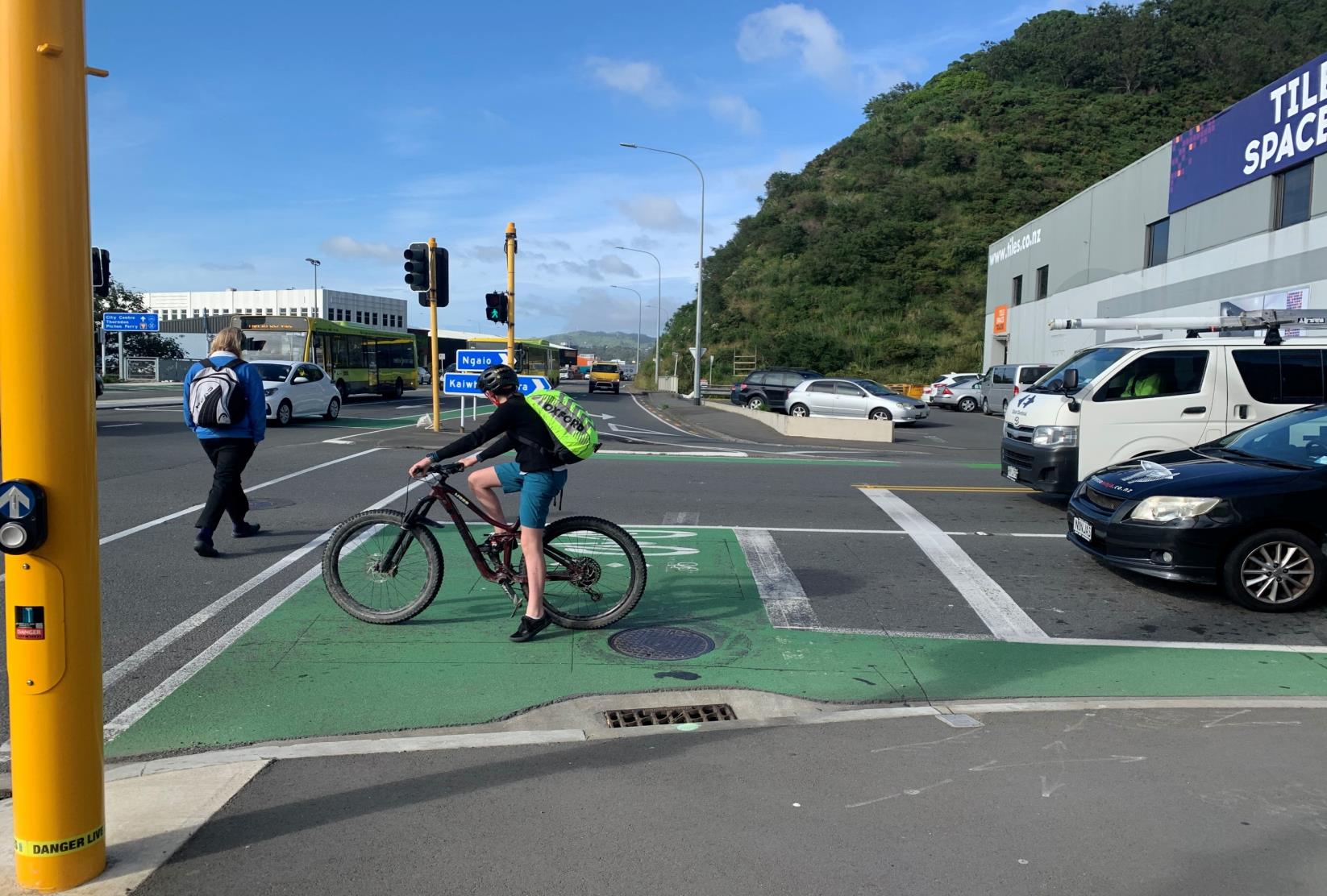
 BUFFERED ADVANCE STOP
BUFFERED ADVANCE STOP
BOX
Design Guidance Note
WAKA KOTAHI NZ TRANSPORT AGENCY
18 DECEMBER 2020
 Copyright information
Copyright information
Copyright ©. This copyright work is licensed under the Creative Commons Attribution 4.0 International licence. In
essence, you are free to copy, distribute and adapt the work, as long as you attribute the work to the NZ Transport
Agency and abide by the other licence terms. To view a copy of this licence, visit
http://creativecommons.org/licenses/by/4.0/.
Disclaimer
The NZ Transport Agency has endeavoured to ensure material in this document is technically accurate and reflects
legal requirements. However, the document does not override governing legislation. The NZ Transport Agency
does not accept liability for any consequences arising from the use of this document. If the user of this document is
unsure whether the material is correct, they should refer directly to the relevant legislation and contact the NZ
Transport Agency.
More information
NZ Transport Agency
December 2020
If you have further queries, call our contact centre on 0800 699 000 or write to us:
NZ Transport Agency
Private Bag 6995
Wellington 6141
This document is available on the NZ Transport Agency’s website a
t http://www.nzta.govt.nz
link to page 1 link to page 4 link to page 5 link to page 6 link to page 6 link to page 7 link to page 7 link to page 7 link to page 7 link to page 7 link to page 7 link to page 8 link to page 8 link to page 8 link to page 8 link to page 8
 Contents
BUFFERED ADVANCE STOP BOX .................................................................................................. 1
Background ................................................................................................................................... 4
Purpose ......................................................................................................................................... 5
Appropriate conditions of use .................................................................................................... 6
Detailed design considerations for ASB retrofit .......................................................................... 6
Detailed design considerations for ASB retrofit and new implementation .................................. 7
Detailed design elements ............................................................................................................ 7
Cycle limit line ............................................................................................................................. 7
ASB (green box).......................................................................................................................... 7
Buffer zone .................................................................................................................................. 7
Limit line ...................................................................................................................................... 7
Possible Buffered ASB length configurations ............................................................................. 8
Marking specifications ................................................................................................................. 8
Green colour ............................................................................................................................... 8
Marking durability ........................................................................................................................ 8
Marking dimensions .................................................................................................................... 8
Contents
BUFFERED ADVANCE STOP BOX .................................................................................................. 1
Background ................................................................................................................................... 4
Purpose ......................................................................................................................................... 5
Appropriate conditions of use .................................................................................................... 6
Detailed design considerations for ASB retrofit .......................................................................... 6
Detailed design considerations for ASB retrofit and new implementation .................................. 7
Detailed design elements ............................................................................................................ 7
Cycle limit line ............................................................................................................................. 7
ASB (green box).......................................................................................................................... 7
Buffer zone .................................................................................................................................. 7
Limit line ...................................................................................................................................... 7
Possible Buffered ASB length configurations ............................................................................. 8
Marking specifications ................................................................................................................. 8
Green colour ............................................................................................................................... 8
Marking durability ........................................................................................................................ 8
Marking dimensions .................................................................................................................... 8
link to page 4 link to page 5
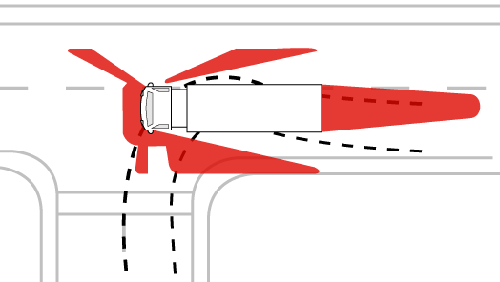 BACKGROUND
BACKGROUND
Given the shift to cycling within New Zealand, it is imperative that New Zealand’s transport network
facilitates this growing trend, while at the same time improving safety for cyclists.
One intervention to improve cycle safety at signalised intersection is advance stop boxes (ASBs).
ASBs allow cyclists to occupy an advantageous position at the front the traffic queue from which
they can safely be seen by other roads users and also allow them to pull away from the signals
ahead of other road users.
While cyclists who are in the ASB do have an improved level of visibility to most other road users,
there is a potential area of concern where trucks and other large vehicles may fail to see cyclists in
the ASB. This is due to the fact that these drivers’ line of sight is higher than that of other standard
road users, which makes visually scanning the area directly in front of their vehicles difficult (see
Figure 1 and
Figure 2). This concern is supported by the fact that one in ten urban cycling death or
serious injury (DSI) crashes occur at signalised intersections and 33 to 40 % of cycling fatalities
involve a truck.
Another ongoing concern is vehicle encroachment into ASBs, which often results in cyclists
queueing in less appropriate areas (e.g. the pedestrian crossing space).
More information around ASBs can be found in
Cyclist waiting facilities at intersections on the
Waka Kotahi Cycle Network Guidance.
Figure 1: Diagram of driver blind spots for a large vehicle1
1 Image sourced from
https://can.org.nz/article/safety-tips-for-cyclists-truck-and-bus-drivers
WAKA KOTAHI NZ TRANSPORT AGENCY
BUFFERED ADVANCE STOP BOX // 4
link to page 5 link to page 6 link to page 6 link to page 6 link to page 6
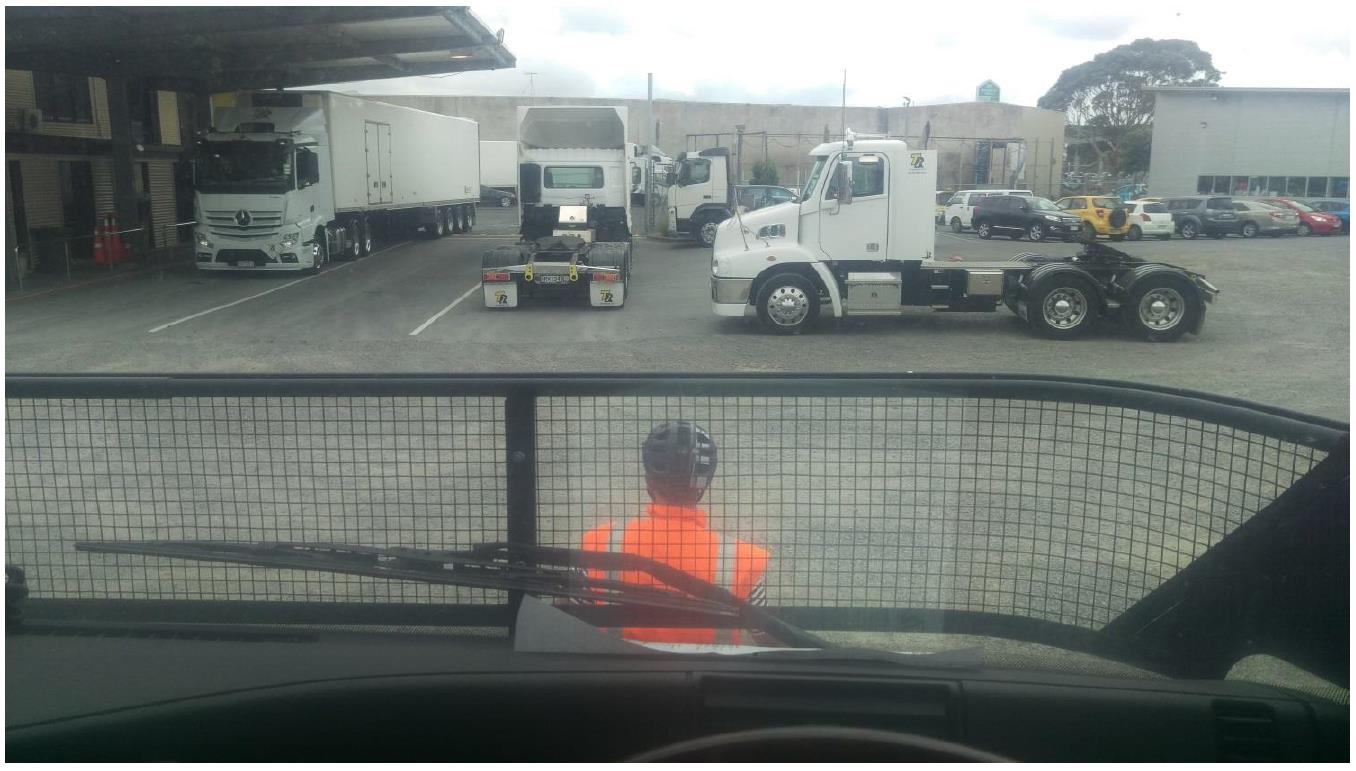
Figure 2: Example of reduced view of cyclist positioned in front of a heavy goods vehicle2
PURPOSE
Many trucks have significant blind spots around the cab. There is concern that where cyclists ride
up to an ASB, they are riding into a truck’s blind spot. To address this, a new ASB treatment is
needed which results in greater space between cyclists and trucks.
This design guidance note provides a treatment solution for ASBs in which a buffer zone is placed
between the ‘limit line’ and the ASB to improve the likelihood of drivers detecting cyclists within the
ASB as well as decreasing the level of vehicle encroachment into ASBs.
This treatment has been evaluated by WSP and found to improve safety via increasing the
distance between stopped motor vehicles and cyclists positioned in the ASB (see
Table 1, Figure 3
and Figure 4) thereby decreasing the chances of drivers in large vehicles failing to see cyclists in
ASBs. This should also reduce incidences of cyclists encroaching over the ‘cycle limit line’ into the
pedestrian crossing zone (see
Figure 3 and
Figure 4).
Table 1: Levels of encroachment into standard vs Buffered ASB by vehicle type
Encroachment into
Encroachment into the
Relative reduction of
Vehicle type
standard ASB
Buffered ASB
encroachment into ASB
Trucks
40 %
13 %
68 %
Buses
24 %
4 %
83 %
Cars
20 %
0 %
100 %
2 Image captured and supplied by Simon Kennett of Waka Kotahi
WAKA KOTAHI NZ TRANSPORT AGENCY
BUFFERED ADVANCE STOP BOX // 5
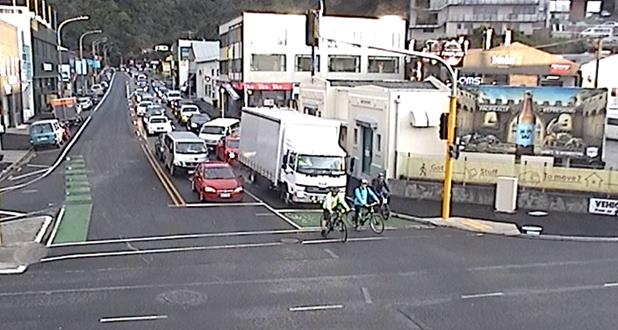
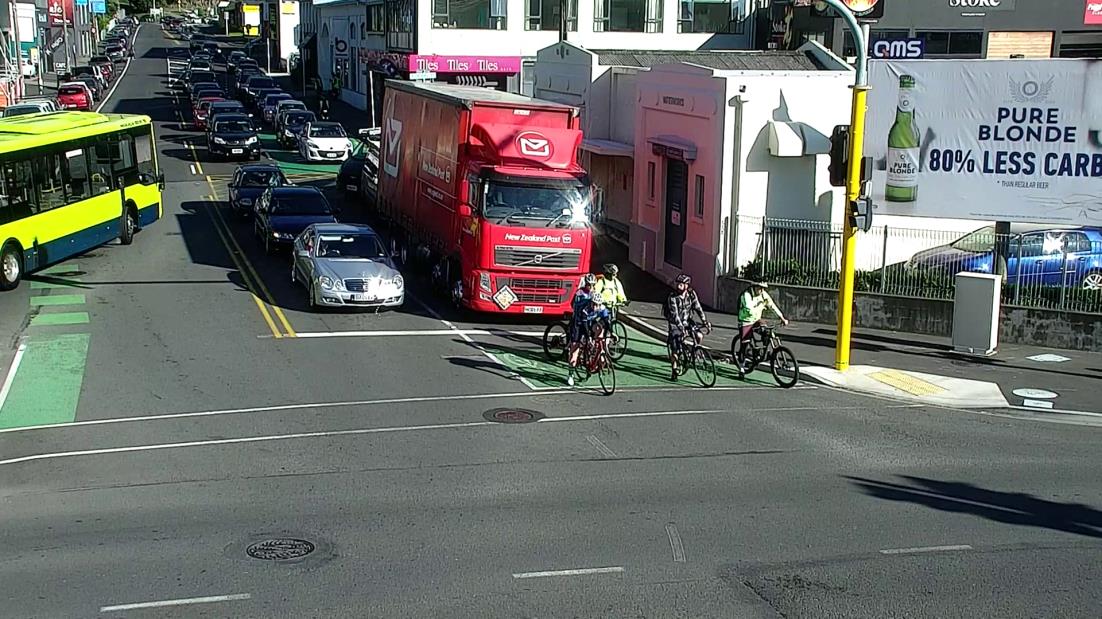
Figure 3: Example of road user behaviour at standard ASB
Figure 4: Example of road user behaviour at a Buffered ASB
APPROPRIATE CONDITIONS OF USE
The Buffered ASB can be applied to an existing ASB and should be considered as the first possible
treatment type for any new ASBs.
It is strongly recommended that a Buffered ASB be considered over a standard ASB treatment at
locations that have an annual average daily traffic (AADT) count of 300 or more heavy vehicles
Detailed design considerations for ASB retrofit
• Given the extended length of the Buffered ASB, care needs to be taken the new marking
length does not extend the limit line further than 5 m from the primary signals.
• Signal loops in the carriageway may need to be recut as the limit line is moved further back
from the signals.
WAKA KOTAHI NZ TRANSPORT AGENCY
BUFFERED ADVANCE STOP BOX // 6
• With the limit line moving further back from the ASB, signal timings should be reviewed for
possible negative impacts as road users now have to travel a greater distance to clear the
intersection.
• There is the potential for ghost markings when the limit line is moved. All possible effort
should be taken to reduce the chance of ghost markings as these can lead to road users
incorrectly positioning themselves in the buffer zone.
• Sight lines should be taken into account when moving the limit line further back from the
primary signals as the new limit line location may have a detrimental effect on said sight
line.
Detailed design considerations for ASB retrofit and new
implementation
• Care should be taken to not have staggered limit lines in multilane setups as road users
may try to align themselves to those in the other lane leading to encroachment into the
buffer zone
DETAILED DESIGN ELEMENTS
Cycle limit line
The ‘cycle limit line’ should retain its width of 100 mm with a 200 mm gap between it and the
pedestrian crossing zone.
ASB (green box)
The desired length of the ASB is 2.9 m. However, having an ASB of 3.4 m or 2.4 m would also be
acceptable if the length of the entire marking (Cycle limit line, ASB and Buffer zone) is 4.0 m or
greater.
The ASB should not be smaller than 2.4 m as this would raise concerns around the conspicuity and
capacity of the ASB to keep cyclists out of large vehicles blind spots.
Buffer zone
Length
The buffer zones minimum distance from the edge of the ‘limit line’ to the back of the ASB must be
1 m with the desired length being 1.5 m.
This would give an overall marking length of 4.5 m in ideal circumstances.
Colour
The buffer zone should not receive any colour treatment and thus be left blank. This should
encourage cyclists to move forward into the ASB as they do with a standard ASB.
Limit line
The ‘limit line’ should be in accordance with the requirements outlined in the Traffic Control Devices
2004 rule, most significantly being that the limit line be “as close as practicable” to the primary
traffic signal.
Where an ASB is installed, Waka Kotahi’s Traffic Control Devices Steering Group have approved a
maximum distance between the limit line and primary signal of 5 m. This is different to Austroads
WAKA KOTAHI NZ TRANSPORT AGENCY
BUFFERED ADVANCE STOP BOX // 7
link to page 8 link to page 9 link to page 10
Guide to Traffic Management Part 10 guidance, which recommends a maximum distance of 3m
between the primary signal and limit line.
Multiple lanes
Where the Buffered ASB extends across multiple lanes, where possible, all limit lines should be in
line with each other.
If the limit lines are staggered this may encourage non-cyclist road users to encroach into the
buffer zone if other road users in the adjacent lanes are positioned further forward than they are.
Possible Buffered ASB length configurations
A set of possible Buffered ASB lengths can be seen i
n Table 2.
Table 2: Possible Buffered ASB lengths
ASB length (including cycle limit
Buffer zone length (m)
Total length (excluding limit line) (m)
line) (m)
3.5
1
4.5
3
1.5
4.5
3
1
4
2.5
2
4.5
2.5
1.5
4
MARKING SPECIFICATIONS
Green colour
Recommend use of AS 2700-1996 G26 Apple Green3
Marking durability
Recommend long-life materials, such as: spread and sprinkle (1.5 mm thick paint, with coloured
aggregate) or Thermoplastic (binder, pigments, aggregate mixed together).
For application advice see also NZTA P33: 20174, as the warranty period for coloured surfaces
outlined here is 5 years.
Marking dimensions
Figure 5 shows the ideal dimensions for the Buffered ASB, where it is reasonably practicable to do
so.
The cycle symbol (M2-3) is as per Traffic Control Devices (TCD) manual Section 6.5.2, which is
replicated for reference i
n Figure 6.
3 Alternatives like AS 2700-1996 G13 Emerald can become dark under yellow sodium lighting
4 https://www.nzta.govt.nz/assets/resources/specification-for-coloured-surfacings-p33/NZTA-P33-
Coloured-surfacings-May-2017.pdf
WAKA KOTAHI NZ TRANSPORT AGENCY
BUFFERED ADVANCE STOP BOX // 8
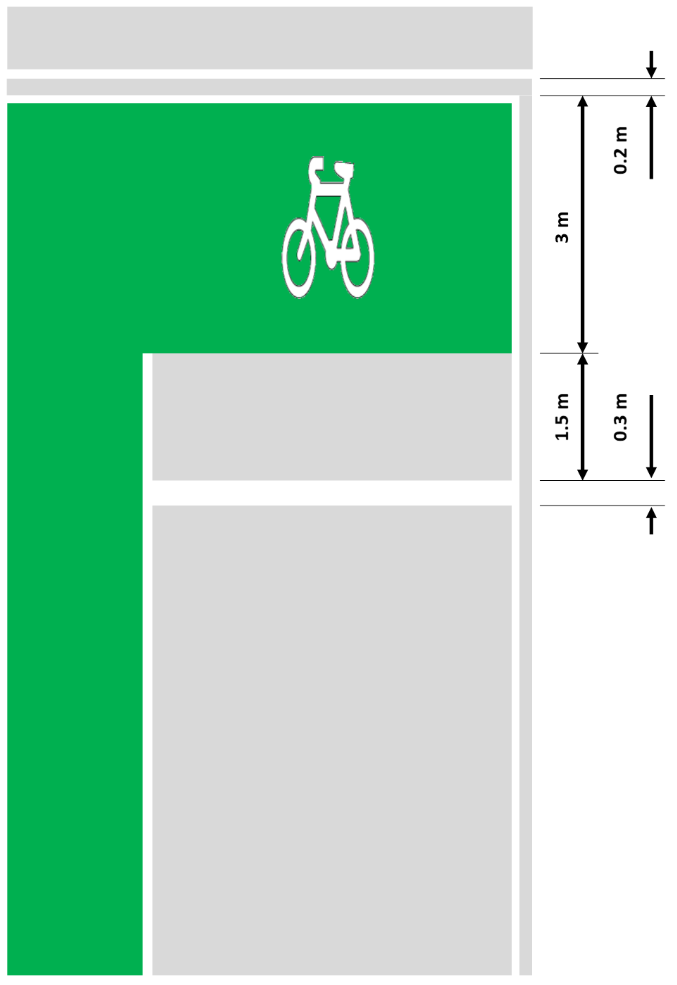
Figure 5: Ideal dimensions for Buffered ASB (a 3 m ASB with 1.5 m buffer zone)
WAKA KOTAHI NZ TRANSPORT AGENCY
BUFFERED ADVANCE STOP BOX // 9

Figure 6: M2 – 3 Cycle symbol for Buffered ASB (Grid Size 50 mm minimum)
WAKA KOTAHI NZ TRANSPORT AGENCY
BUFFERED ADVANCE STOP BOX // 10










